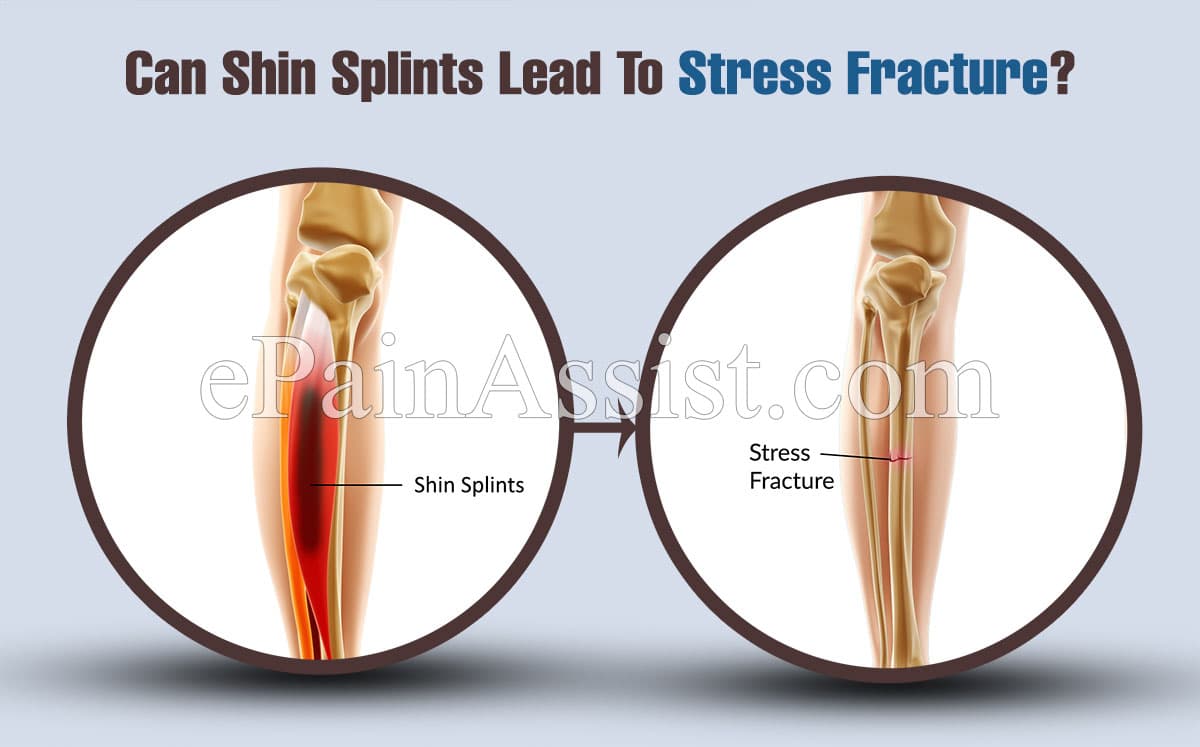Can Shin Splints1 Lead To Stress Fracture2?
When asked doctors about shin splint and stress fracture of bones, they say that shin splint if unattended progresses at a slow pace. Accordingly, a minor ache transforms into chronic pain, which limits you to run or jog and ends up with severe pain even when you stand and walk i.e. stress fracture. Therefore, it is essential for you focusing on boosting strength to key areas with various runner-specific physical exercises. Along with this, you have to target your knee, lower leg and hips to manage prolong muscles fatigue and devastate tensile forces.

How Shin Splint Converts to Stress Fracture?3
While your foot strikes the ground, its reaction force transmits from your foot and goes upward into your spine. This means, reaction force of the ground attempts to bend your bones at repetitious manner at the highest possible velocity.
Our body muscles provide support to the mentioned tensile epicenters with lower portion of the inner shin at a specific localized area. These muscles pull up and avoid the respective bones to bend. Another prime aspect about shin splint is that low shin injuries are not outcomes of any single foot strike.
Instead, they take place because of rapid and repetitive tensile loads, which take place while you strike your foot every time. If your body muscles fail to prevent bending of bones, they cause irritation i.e. shin splint, stress reaction i.e. bone inflammation and eventually result in bone stress fracture.
Shin splint is a broad term related to walking, jogging or any other physical exercise and it indicates pain across inner edge of your tibia or shinbone. The problem of shin splints often develops after your exercise or physical activity and is associated mainly with running or jogging. Shin splints problem is caused by involving in a vigorous sport related activity, particularly, if you have just started with your fitness program.
However, you may get immediate relieve from your pain due to shin splints by following simple measures. These include adequate hours of sleep, applying ice to the affected area; stretching and wearing compression at the time of exercise may help a lot. Besides this, you have to avoid overdoing your physical exercise routine. For this, you should discuss with your trainer and health expert in detail, so that your shin splint problem never comes back in the near future.
Shin Splint or Stress Fracture
Shin pain causes a huge frustration and it constitutes a viscous cycle. Injury in this case may cause either in minor form as shin splint or in a major one as stress fracture. In most of the cases, shin pain develops in an abrupt way, while the runner/jogger remains at fault.
A minor form of shin splint improves while you do warm up or run, but if you do not have any symptom, it never indicates that the damage is not present. Once you start running, your injury becomes worse slowly and eventually it turns into a big tide.
Inner shin problems, such as stress reactions, shin splints and stress fractures usually occurs due to the formation of tensile force to non-compressive bones. Skeletal system of a human being develops compression forces, while the bone responds to such forces by creating more bones to make it highly strong. On the other side, pulling or tensile forces are of bone kryptonite.4
Also Read:
